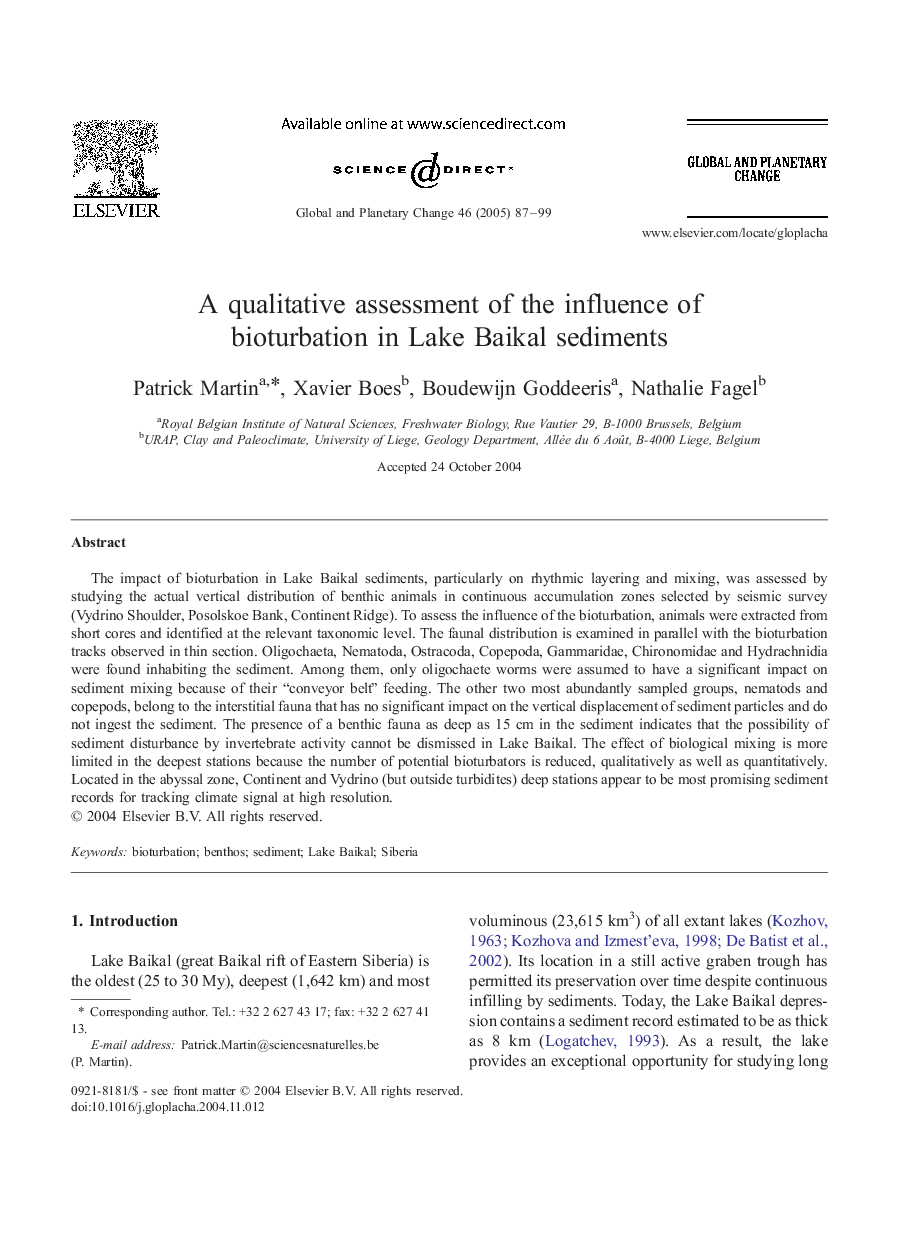| Article ID | Journal | Published Year | Pages | File Type |
|---|---|---|---|---|
| 9462398 | Global and Planetary Change | 2005 | 13 Pages |
Abstract
The impact of bioturbation in Lake Baikal sediments, particularly on rhythmic layering and mixing, was assessed by studying the actual vertical distribution of benthic animals in continuous accumulation zones selected by seismic survey (Vydrino Shoulder, Posolskoe Bank, Continent Ridge). To assess the influence of the bioturbation, animals were extracted from short cores and identified at the relevant taxonomic level. The faunal distribution is examined in parallel with the bioturbation tracks observed in thin section. Oligochaeta, Nematoda, Ostracoda, Copepoda, Gammaridae, Chironomidae and Hydrachnidia were found inhabiting the sediment. Among them, only oligochaete worms were assumed to have a significant impact on sediment mixing because of their “conveyor belt” feeding. The other two most abundantly sampled groups, nematods and copepods, belong to the interstitial fauna that has no significant impact on the vertical displacement of sediment particles and do not ingest the sediment. The presence of a benthic fauna as deep as 15 cm in the sediment indicates that the possibility of sediment disturbance by invertebrate activity cannot be dismissed in Lake Baikal. The effect of biological mixing is more limited in the deepest stations because the number of potential bioturbators is reduced, qualitatively as well as quantitatively. Located in the abyssal zone, Continent and Vydrino (but outside turbidites) deep stations appear to be most promising sediment records for tracking climate signal at high resolution.
Related Topics
Physical Sciences and Engineering
Earth and Planetary Sciences
Earth-Surface Processes
Authors
Patrick Martin, Xavier Boes, Boudewijn Goddeeris, Nathalie Fagel,
